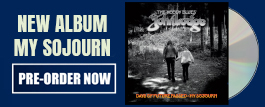 Moody Blues mark 50 years of trippy ‘Days of Future Passed’ album with anniversary tour
Moody Blues mark 50 years of trippy ‘Days of Future Passed’ album with anniversary tour
May 30, 2017
It’s no coincidence the Moody Blues recorded “Legend of a Mind” — their suitably trippy tribute to LSD guru Timothy Leary — while making their landmark concept album, “Days of Future Passed,” in 1967.
That was the same year four of the five members of the English rock band took LSD for the first time. Their early acid trips had a major influence on the group’s music and on the now 50-year-old “Days of Future Passed,” which they are now performing for the first time ever in its entirety in concert.
“As almost everybody did when we first started tripping, I thought it would be mind-expanding and all of that,” said drummer Graeme Edge, now 76, who performs with the Moody Blues Sunday at Pala Casino Spa & Resort and June 17 at the Hollywood Bowl.
“I can tell you exactly how many trips I had. Eight. And by the seventh, I was thinking: ‘Here we go again — the walls are breathing, and I’ve got another 12 hours to go. Oh, my god!’ It got sort of boring. Fortunately, we were so attracted to the music that we didn’t have to (keep taking) acid; we just got high on the audiences. So, maybe, we were lucky.”
Did the Moody Blues believe using LSD would push them into uncharted new musical territory?
“Yes, in a way,” said Edge, who had a stroke last year and whose sole remaining vice is tobacco.
“We did record a couple of times on acid — and it was rubbish. What acid did was give you the ambition to have the music you were making sound like the music you listened to like when you were on acid. So it gave us the ambition to strive to give that experience to listeners. But performing on acid was absolute rubbish.”
In 1967, three of the Moody Blues’ five members accepted an invitation to visit LSD champion Leary at his home, north of San Francisco. Edge and bassist-singer John Lodge declined. Guitarist-singer Justin Hayward, flutist-singer Ray Thomas and keyboardist Mike Pinder accepted.
“The other guys were afraid they’d get spiked (with LSD),” Hayward recalled in a Union-Tribune interview in 1996, the same year Leary died. “And none of us did; it was a bit of a disappointment. But Leary was a gentleman, and very bright, with wonderful blue eyes. A unique man.”
Ultimately, the Leary-inspired “Legend of a Mind” was left off “Days of Future Passed,” which featured the London Festival Orchestra.
The album catapulted the Moody Blues to international stardom, thanks to such gently psychedelic songs as “Tuesday Afternoon” and “Nights in White Satin.” Both featured the Mellotron, a clunky prototype of a sampling machine, which could simulate the sounds of orchestral string and brass instruments.
Clocking in at 7½ minutes, “Nights in White Satin” quickly became a slow-dance favorite at schools and summer camps on both sides of the Atlantic.
“Ah, yes,” Edge said, speaking from his home in Florida. “People got married to that song and had births to it. Unfortunately, now — after 50 years — people have also had funerals with it. But that’s the changing face of time.”
“Nights in White Satin” topped the Billboard charts in the U.S. on three separate occasions and “Days of Future Passed” became the Moody Blues’ most enduring album. This still surprises Edge, Hayward and Lodge, the band’s three longest-serving members.
“Who knew? We thought (1968’s) ‘In Search of the Lost Chord’ would be our biggest album,” Edge said. He laughed when asked how he would have reacted if anyone had predicted, in 1967, that the Moody Blues would still be active half a century later.
“I would have called them a liar!” he said. “Because when we were doing this when we were 23, 24, 25, we thought that — if you were over 30 — you wouldn’t understand rock, at all, and you’d have to do something else. We didn’t realize that, when we got to 30, our friends and fans would be 30, too.”






